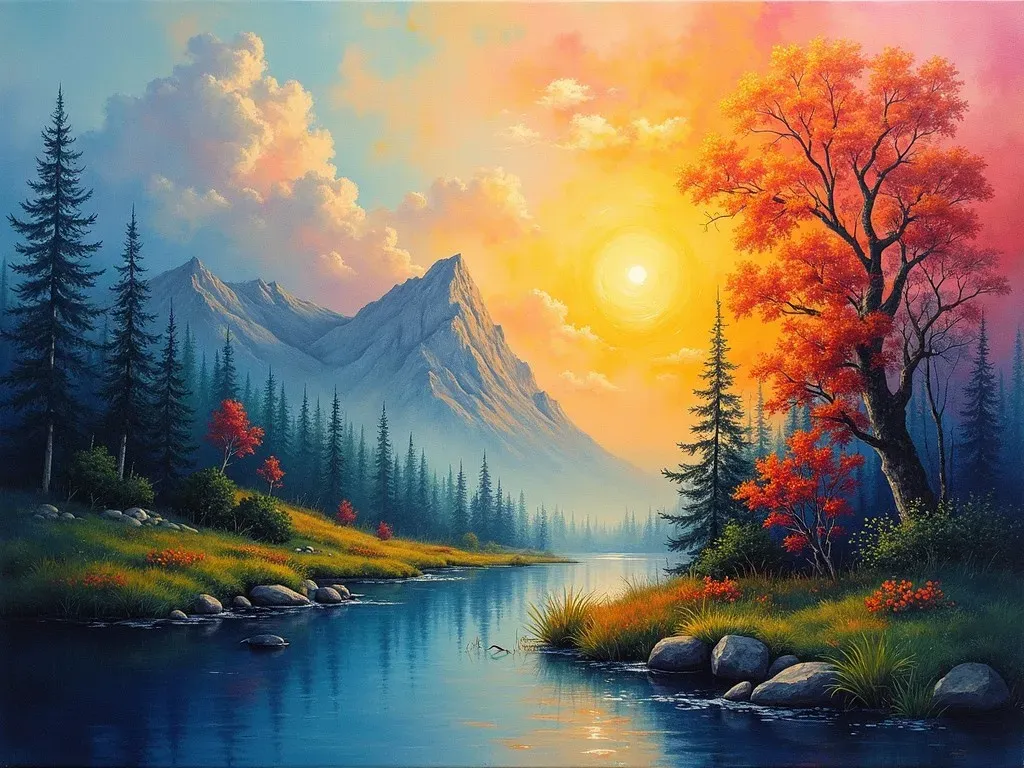When it comes to exploring the vibrant world of oil painting, few resources compare to the wealth of oil painting videos available online. These instructional videos can transform beginners into skilled artists, offering countless Techniques, tips, and tricks to master the art of oil painting. Whether you’re just starting or looking to hone your skills, these videos can be a treasure trove of knowledge and Inspiration.
Types of Oil Painting Videos
Oil painting videos come in various forms catering to different levels of expertise and styles. Here’s a brief overview:
| Type | Description |
|---|---|
| Tutorial Videos | Step-by-step guides on specific techniques or themes. |
| Demonstration Videos | Artists showcase their process for a particular painting. |
| Time-lapse Videos | Fast-forward documentation of the painting process. |
| Theory and Techniques Videos | In-depth discussions about color theory, brushwork, and more. |
Where to Find Quality Oil Painting Videos
Here is a list of valuable resources for excellent oil painting videos that can elevate your painting skills:
- KevinOilPainting – YouTube: Kevin uploads new videos weekly that teach you to paint landscapes, seascapes, and more.
- Concept Art Empire: This site offers a compilation of over 40 free oil painting video tutorials that span the basics to advanced techniques.
- Jerry’s Artarama: A repository for numerous free art instruction videos focused on oil, perfect for both novices and seasoned painters.
Getting Started with Oleo Painting: Essential Equipment
To dive into the immersive universe of oil painting videos, starting with the right equipment is crucial. Here’s a list of basic Supplies you’ll need:
| Item | Purpose |
|---|---|
| Oil Paints | The main medium used for painting. |
| Brushes | Different sizes and shapes for various strokes. |
| Palette | A surface for mixing oils and colors. |
| Canvas or Canvas Board | The surface for your artwork. |
| Thinner | For cleaning brushes and thinning paint. |
| Palette Knife | For mixing paints and creating texture. |
Techniques Explored in Oil Painting Videos
Beginners can find a wealth of smooth transitions from basic techniques to more advanced styles by exploring diverse oil painting videos. Below are several commonly taught techniques through these mediums:
1. Wet-on-Wet Painting
This technique allows you to apply fresh paint onto wet paint, creating soft, smooth transitions. Popularized by Bob Ross, it’s ideal for landscapes and skies.
2. Glazing
Glazing involves applying a transparent layer of paint over a dried layer, creating rich colors and depth.
3. Impasto
This technique uses thick applications of paint to create texture and a three-dimensional effect on the canvas.
4. Scumbling
Scumbling is a technique where a dry, wash-like layer of paint is brushed over a dry underlayer, creating an effect that adds vibrancy and texture.
Popular Oil Painting Tutorials on YouTube
YouTube is filled with fantastic oil painting tutorials that can cater to various skill levels. Here’s a list of highly regarded channels:
| Channel Name | Description |
|---|---|
| Patrick Connors | Offers in-depth tutorials focusing on various oil painting techniques. |
| Angela Anderson | Provides beginner-friendly step-by-step painting videos. |
| Bob Ross | Famous for his calming tutorials and detailed landscape paintings. |
| Mike Thompson | Specializes in portrait painting and realism techniques. |
Must-Watch Videos for Beginners and Advanced Painters
- How To Paint Foliage | Oil Painting Tutorial: A must-see for mastering foliage in landscapes.
- Basic Techniques + Step by Step: An excellent resource for beginners covering essential techniques.
- 7 of the Best Oil Painting Demonstration Videos: A collection of exquisite demonstrations from various artists showcasing impressive landscapes.
Tips for Maximizing Your Learning from Oil Painting Videos
- Practice Regularly: Consistent practice is key to mastering oil painting techniques.
- Take Notes: Jotting down techniques or tips from videos can help with retention.
- Watch Actively: Instead of passively watching, engage with the content by following along and pausing as needed.
- Experiment: Don’t be afraid to try new styles and techniques beyond what you learn in videos.
Q&A Section
Q1: Are oil painting videos suitable for beginners?
A1: Absolutely! There are numerous beginner-oriented videos that start from the fundamentals and gradually advance to complex techniques.
Q2: What should I focus on first as a novice?
A2: Start with the basics like understanding materials, color mixing, and creating simple compositions.
Q3: Can I learn different styles of painting through these videos?
A3: Yes, many artists share diverse styles, including realist, impressionist, and abstract techniques in their videos.
Q4: How do I practice what I learn from the videos?
A4: Choose a specific video tutorial, gather the necessary supplies, and follow the steps while incorporating your own creative twists.
Conclusion
Oil painting videos offer an efficient and enjoyable way to drop into the rich world of oil painting. Through these dynamic resources, budding and experienced artists alike can expand their skills, unleash their creativity, and embrace the vibrant spectrum of oil painting. Whether exploring techniques, learning new styles, or seeking inspiration, there’s something for everyone in the realm of oil painting videos!
